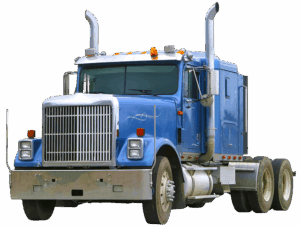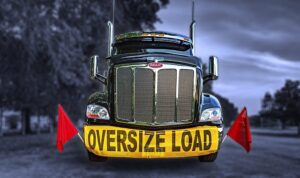Register Car California: VIN Verifier Guide to DMV Requirements
Looking to register your car in California? Our step-by-step guide simplifies the process, ensuring you’re compliant with state regulations. From understanding crucial requirements like the need for a…….

Looking to register your car in California? Our step-by-step guide simplifies the process, ensuring you’re compliant with state regulations. From understanding crucial requirements like the need for a valid Vehicle Identification Number (VIN) verifier to gathering essential documents and completing the application at a California DMV office, we cover it all. By following these clear instructions, you’ll be on your way to seamless car registration in no time.
- Understand California Car Registration Requirements
- Gather Necessary Documents for Registration
- Visit a California Department of Motor Vehicles (DMV) Office
- Complete the Vehicle Registration Application Process
- Verify Your VIN and Finalize Registration
Understand California Car Registration Requirements

Before registering your car in California, it’s crucial to understand the state’s specific requirements. One key step is ensuring your vehicle has a valid Vehicle Identification Number (VIN) and that it passes an inspection conducted by a certified technician using a reliable vin verifier. California law mandates that all vehicles, regardless of age, must meet safety and emissions standards set by the California Air Resources Board (CARB). This includes checking components like brakes, lights, tires, and exhaust systems during a mobile vin inspection or formal inspection at an approved facility.
Additionally, you’ll need to have your car’s title on hand, along with proof of insurance and identification. The registration process involves submitting these documents to the California Department of Motor Vehicles (DMV), either in-person or online. A valid registration not only ensures your vehicle is legally operable but also plays a vital role in protecting your investment by establishing ownership and providing liability coverage.
Gather Necessary Documents for Registration

Before you start the registration process, ensure you have all the required documents ready. This includes your vehicle’s Registration Application (Form MV-B), which can be obtained from the California Department of Motor Vehicles (DMV). Additionally, you’ll need proof of insurance, a valid driver’s license, and the Vehicle Identification Number (VIN) from your car. The VIN is a unique 17-character code that can be found on the vehicle’s registration label or in its owner’s manual—a crucial detail for any mobile vin inspection or vin inspection.
Don’t forget to bring along any necessary fees for the registration, which vary based on your vehicle type and other factors. It’s recommended to double-check with the DMV about specific requirements, especially when it comes to documents like title transfer forms if you’re registering a vehicle that was recently purchased.
Visit a California Department of Motor Vehicles (DMV) Office

To start the registration process for your car in California, the first step is to visit a local California Department of Motor Vehicles (DMV) office. This physical interaction ensures that all required documents are accurately reviewed and validated. At the DMV, you’ll need to bring along several key items, including your vehicle’s title, proof of insurance, and identification documents. Additionally, it’s highly recommended to have a mobile vin verifier on hand to facilitate a swift inspection of your car’s unique Vehicle Identification Number (VIN).
This process is not just about paperwork; it also involves ensuring the accuracy of your car’s information. A mobile vin inspector can play a crucial role in this stage by providing an efficient, on-site VIN verification service. This step helps to prevent any potential errors or fraud that might arise from inaccurate documentation, making the registration experience smoother and more secure for all involved parties.
Complete the Vehicle Registration Application Process

To complete the vehicle registration process in California, you’ll need to fill out and submit the Vehicle Registration Application (Form DV-180). This form is where you provide essential details about your vehicle, including its make, model, year, and unique identifying number—the Vehicle Identification Number (VIN). A crucial step in this process involves using a reliable VIN verifier to ensure that the data on your application matches the vehicle’s actual specifications.
Consider utilizing a mobile VIN verifier for convenience during your registration journey. This service allows you to quickly and accurately inspect your vehicle’s VIN by accessing specialized software through your smartphone or tablet. By conducting a thorough VIN inspection, you can prevent errors and streamline the registration process, making it easier and faster to get your car registered in California.
Verify Your VIN and Finalize Registration

After gathering all the necessary documents, the next step in registering your car in California is to verify your Vehicle Identification Number (VIN). This critical process ensures that your vehicle’s details match the information on record and helps prevent fraud. You can perform a VIN inspection using a reliable mobile vin verifier or check online resources provided by the California Department of Motor Vehicles (DMV). This step involves entering your VIN into a database to confirm its authenticity and history, including any previous owners or reported incidents.
Once your VIN is verified, you’re ready to finalize the registration process. This includes submitting all required forms, paying the registration fees, and ensuring your vehicle meets safety standards. A successful mobile vin inspection can streamline this phase by providing immediate validation, making it easier for you to complete the registration quickly and efficiently at a California DMV office or online.
Registering a car in California involves understanding specific requirements, gathering essential documents, visiting a local DMV office, completing an application process, and verifying your Vehicle Identification Number (VIN). By adhering to these steps and using tools like a VIN verifier, you can ensure a smooth registration experience. Remember to keep your documentation up-to-date for future reference and compliance with California’s motor vehicle regulations.







